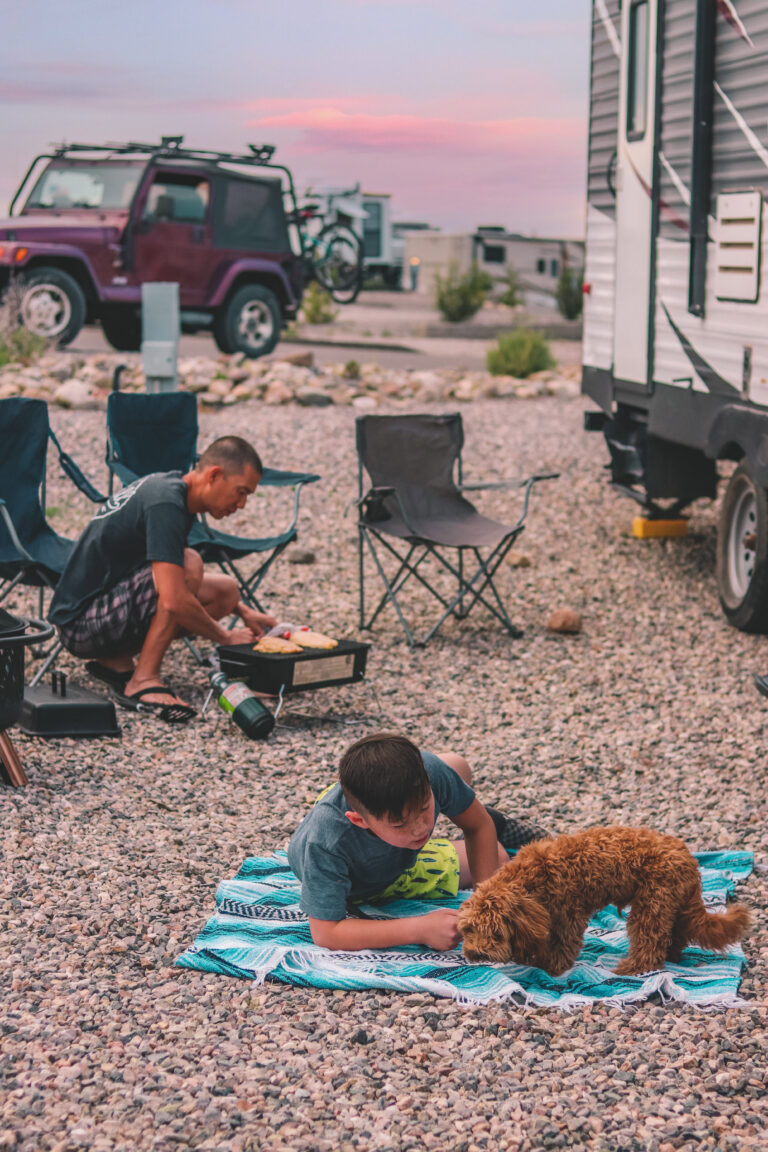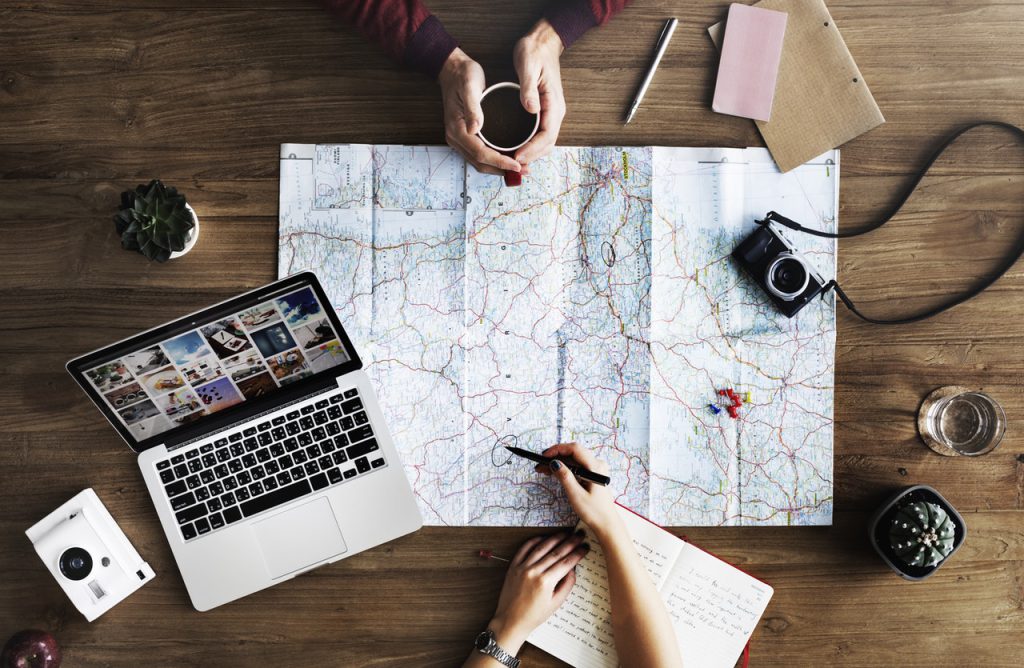
It’s official: the new year is here. And most of us are busy thinking about our goals and aspirations for 2019. (And finally taking down all that garland… but that’s a different story.)
For those of us gifted with the wanderlust bug, it’s popular to make a resolution to save money. Of course, it’s a popular resolution for pretty much everyone… but if you’re a travel aficionado, you really need that extra wiggle room to help facilitate your upcoming adventures!
But it’s not always easy to stash away cash, especially the hefty amount you might need to take on some of those epic trips you have planned. But with a little bit of smart steps and know-how, you can create the travel fund you need to get you where you’re going. So to start out 2019 right, we’ve written this guide to saving money, filled to the gills with tips, tricks, and tactics you might not have already thought about. We’ll also talk about how to stretch your travel dollars to the max by finding the most affordable adventures out there.
So, ready to get on the road? Here’s what you need to know to fund it.
Saving Up for a Vacation (or Three) in the New Year?
Before we dive into the nitty gritty and explain some of our favorite ways to save, let’s talk about something really important: motivation. One of the best pieces of money-saving advice we’ve ever heard is to have a clear idea of why you’re saving up. (In fact, that’s true of every kind of goal you might have, from saving money to losing weight to learning a new language.)
Most of us would like a little bit more wiggle room in our budgets. But if you’ve decided ahead of time that you’re specifically going to save money for travel, it can make it a lot easier to make the sacrifices you’ll need to in order to achieve your goal. When you’ve got a travel map full of planned adventures, foregoing dinner out at the local watering hole is a lot less painful… you’ll be noshing on some exotic new treats you can’t get at home in a few weeks’ time!
So if you’re wondering how to start a travel fund and save your money, the very first step is probably also the most fun: make some adventure plans! Sit down with a map (or your favorite road atlas) and figure out what your dream vacation looks like. Heck, you can even get crazy and plan several. Don’t be afraid to get detailed — the more specifics you have planned ahead of time, the more accurately you can estimate how much money you’ll need to make it a reality. You’ll also be able to more clearly envision yourself enjoying the fruits of your labor… which will make that labor feel a lot less laborious.
How to Start Saving Money
Once you have a plan in place, it’s time to get to the hard part… actually saving up the money you need to make those dream vacations a reality. Don’t get us wrong, it won’t always be easy or fun. But with these money saving ideas and tips, it doesn’t have to be as difficult as you might imagine!
Here are 10 ways to save money that’ll get you — and your wallet — road-ready in a flash.
Best Ways to Save Money
Here are the very best saving tips for getting you to your goal as quickly as possible.
1. Get serious about your budget.
No matter what you’re hoping to save money for, if you want to succeed, one thing’s for certain:
You. Need. A budget.
Yes, it may sound like a pain in the butt to make one up, and yes, it may seem restrictive at first. But if you don’t have a real sense of how much money you’re making and where it’s all going, there’s absolutely no way you’ll be able to make a plan for stashing more of it.
Fortunately, today’s technology means it’s easier than ever to make a budget. Apps like Mint, Personal Capital, and You Need a Budget (see? We told you!) allow you to make a comprehensive monetary plan simply by entering your banking information. They’ll sync all your different accounts so you can view and manage them from one location, making it a whole lot easier to see where those pesky “leaks” might be. Then, you’ll be able to get serious about saving — which leads us to our next list item.
2. Save first.
Between getting the bills paid, getting the kids fed, and keeping ahead of repairs and other unexpected expenses, it can be difficult to save any money at all, let alone a lot of it.
But if you want to know how to save money every month, without fail, the only reliable way to do so is to actually budget in savings like another regular expense. Once you have your budget made up, you’ll have a better sense of exactly how much you can spare each month. Even if it’s just $10 or $20, it counts — and when you’re consistent, it’ll really add up over time!
If you look at your budget and it seems like there simply isn’t another penny to squeeze out, however, don’t lose hope. Keep reading!
3. Take a hard look at discretionary expenses.
When you look at your budget, you’ll start to notice that your expenses come in two categories: regular, required expenses you don’t have much immediate control over (like rent or your car payment), and discretionary expenses that are more adjustable. These will include necessities that you can significantly modify, like groceries (which we’ll say more about in a minute), as well as “fun” stuff that may still be regular, like your Netflix membership.
These may not be the largest of your expenses, but they are the most important. Because in these areas of your budget you have way more control — which means finding new places to scrimp and save for those adventures of yours.
Nixing your membership to a monthly streaming service or a daily latte habit might not seem like much. But all those little transactions can really add up over time! For instance, if you’re paying for both Netflix and Hulu and you ditch one, you’d save approximately ten dollars a month… which adds up to $120 over the course of a year, which is a tidy sum to add to your gas budget.
If you’re like most of us, though, your biggest discretionary expense by far is food-related. And there’s no negotiating it: you’ve absolutely got to eat, right?
Right. But that doesn’t mean you have to spend so much on filling your belly.

4. Rethink your grocery-shopping strategy.
Grocery purchases are one of the most flexible line items in any budget. Case in point: the USDA offers a wide variety of estimated “average” grocery expenditures for Americans, and they start as low as $558.90 per month and range all the way up to $1,279.60 per month for a family of four. That means the upper-level average is more than double the lower estimate!
That’s an insane amount of savings potential, especially if you’re being pretty blase about what you’re buying. Focusing on fresh, healthy foods as opposed to pre-packaged convenience items will help you shave money off your grocery total naturally… not to mention making you and your family healthier in the bargain.
You can also take a few hours each week to sit down with those coupon flyers we all get in the mail (and so often immediately throw out). Although it’s tempting to toss those pages directly into recycling, think of it as throwing away cash money — because that’s pretty much what you’re doing!
Some savvy couponers are able to clip hundreds of dollars worth of free and discounted groceries. In fact, some couponers have even been able to earn money from the stores (although many have now updated their policies so that this is no longer possible). Although it may seem like adding a chore to your weekly list, you can think of it like doing an hour or so of overtime — and once you’re skilled and practiced, it might actually earn you more money per hour than your regular job. Kids love to help, too — and it’ll get them involved in meal planning, which is a good skill to start early. And don’t forget about the deals you can score after your groceries are purchased by taking advantage of rebate programs and apps like Ibotta!
5. Make sure everyone’s on board.
Think about how much money you can save when you really put your mind to it. Now multiply that by two — or four.
Pretty impressive, right? If you really want to save money quickly, making sure everyone in the family is on board will go a long way toward making it happen.
Obviously, young children won’t be able to contribute as much as mom and dad, who are, after all, earning the bulk of the family’s income. But getting everyone in the same mindset (i.e., that we’re saving now to have more money to spend on adventures later) might make for fewer tantrums in the toy aisle at Target when you say “no” to a request for a new toy or board game.
Older kids, who might have jobs of their own, might also be encouraged to drop a few pennies into the travel fund. Learning to save for what we want is an important financial lesson at any age… and in this case, it’ll help make an amazing family vacation a reality.
Simple Ways to Save Money
This just in: not all money-saving tips have to sound arduous. In many cases, building a few frugal habits will help you save money without even thinking about it.
Easy ways to save money are *smart* ways to save money. After all, the simpler your money-saving tactic is, the more likely you are to actually stick with it!
Here are some ways to make saving money an automatic process in your household.
6. Stop going out to eat.
Okay, this one might sound less than easy for some of us.
But even a mediocre restaurant meal is insanely inflated in price. It’s not hard to spend over $100 on feeding a family of four at Chili’s or Applebee’s for dinner!
You can make the same meal at home for a fraction of the cost… and it’ll likely be healthier, to boot. (Even if you cook up indulgent options, you’ll use fresh ingredients that have less salt and preservatives than the stuff they serve up at mid-tier restaurants.)
Obviously, eating out is a leisure activity, and for many of us, it’s a source of joy. And we’re by no means suggesting you should never indulge in fine dining. In fact, exploring the local food scene is one of our favorite things to do at a new destination!
But don’t blow the cash you could be spending on those experiences on another night at the so-so pizza joint down the street. Combined with the grocery-shopping strategy outlined above, eating the majority of your meals at home could save you hundreds of dollars a month — and that way, you’ll have the funds you need to eat the world.
7. Start a travel fund jar.
You know that spare change you pull out of your pocket and clonk down on the dresser as soon as you get home?
What if you started putting all of those pennies into a vacation fund jar instead — and occasionally cashing them out to add to your travel budget?
By placing a travel fund jar in a conspicuous area of your home, you’ll encourage everyone to add their spare change whenever possible… and even those small handfuls do eventually add up to real sums. You can even take it a step further and use it as a combination “penalty” tool and saving device. For example, maybe you have to put in a dollar every time you swear, bite your nails, or indulge in some other habit you’re trying to kick. Bam: two new year’s resolutions knocked out with one convenient tool!
8. Get familiar with your local thrift shop.
If you’re used to buying things new, you might be surprised at how much money you can save at your local thrift shop… and at how awesome those thrift-store finds can be! It takes a little bit of looking, of course, but with diligence, you can nab stellar deals on unique, vintage items, expanding your wardrobe and your wallet.
Plus, finding the perfect piece at a thrift store has an added reward: it feels like winning! Because you have to put in a bit more time and effort, everything you buy used comes with an additional aura of awesome. (Psst: this tip goes for more than just clothing, by the way. Many thrift stores carry kitchen goods, home appliances, board games, books, and more. So no matter what you need, consider taking a trip to Goodwill before a trip to the mall!)
9. If in doubt, (at least try to) go without.

In a heavily consumerist society, it’s easy to get roped into the illusion that we need more, more, more to make us happy. According to advertisements, each new invention or upgraded piece of technology is absolutely critical to your wellbeing… and you also need to replace those old items of yours, even if they’re still working.
But keeping up with that false image is an easy way to drain your coffers and keep you from ever getting on the road. So next time you’re tempted by some new and improved gadget or outfit, take a deep breath, remember your larger goal, and go without it. Chances are, in a few weeks, you’ll forget you ever wanted it in the first place!
You could even take on a shopping ban, vowing not to buy anything new (except for groceries and other necessities) for a set amount of time. It could be as short as a weekend… or as long as a year, as writer Cait Flanders achieved for the purpose of writing her memoir on the topic.
All told, a shopping ban or similar moratorium on spending is less about the money you’ll save while doing it, and more about seeing exactly how much we spend thoughtlessly… and how little we really need. After all, science tells us we’re happier spending money on experiences than things, and as a traveler, you know the proof of that prediction is in the pudding. So wear your old clothes and put away that cash to take the body inside those clothes to new places!
10. Reuse, repair, recycle.

Even if you downsize your regular shopping habits significantly, you’re eventually going to have something break down or fail on you. Things fall apart — that’s just how the world works.
But we didn’t always live in a world where the first impulse was to replace an item with a brand new one. Clothes can be sewn and patched, shoes can be cobbled, and mechanical items can be tinkered with. All it takes is some patience and ingenuity!
Instead of rushing out to replace a broken or misplaced item, consider fixing up your old one… or recycling something else that might work just as well. You’ll save money on all those new items you’re not buying, and you’ll also help simplify and minimize your life, getting rid of the clutter that can so easily drown us in our own homes.
In fact, while you’re at it, you might also consider going through your existing items and finding some to sell. You’ll clean out your space even more… and earn a few extra bucks to stick into that growing travel fund of yours. Win-win!
Double Down Your Savings with Cheap Travel
Make no mistake about it — learning how to save money is an important first step to getting on the road. Even the most affordable forms of travel do cost money, and they can be difficult to budget for if you don’t have a plan in place.
But now that you’ve done the hard work of scrimping and saving, why get more adventure for your dollar? By approaching travel the right way, you’ll be able to see a whole lot more for a whole lot less.
Choose budget-friendly destinations.
You can make a huge impact on your overall travel budget before you ever step foot in the airport or stick the key in the ignition. Because although all travel comes with some additional expenses, it’s also true that some destinations are (considerably) costlier than others!
A trip to New York City or San Francisco, for example, is bound to rack up a higher total than a journey through, say, central Georgia. And if you’re looking to experience the height of indulgence, think about it this way: you can get a lot more for the same amount of money if you pick a smaller town. (And in today’s sophisticated, worldly culture, there are often just as many foodie havens and boutique shopping opportunities in America’s lesser-known cities.)
You could also skip the whole “town” thing entirely and take a trip focused on the outdoors, which are both less expensive and more soul-satisfying. RVing is a perfect way to explore our country’s bevy of state and national parks… but we’ll say more about that in just a second!
Consider staying closer to home.
Whether it’s hefty airfare or a huge amount of money spent filling up the gas tank, physically getting where you’re going is often half the battle, if not more, when it comes to travel budgeting.
Fortunately, we live in a country where it’s not hard to find beauty, no matter what corner of it you call home. And with ample local and state parks around, which most often offer affordable camping opportunities, you could have an amazingly cheap “staycation” destination just around the corner. You’ll spend less on gas and you won’t be exhausted by hours and hours of travel, which means you can focus your energy, effort — and all that extra cash you saved — on actually getting out and exploring your destination, even if it’s one that’s not very far from home.
Remember: RVing is one of the most affordable ways to get around!

Yes, gas can add up and rentals can be expensive (though they don’t have to be, which we’ll talk about in just a minute!). But all told, RVing is one of the least expensive — and greenest! — ways to see the country. Plus, you won’t have to wait through any annoying TSA lines or worry about unpacking and repacking your suitcase into a series of hotel rooms.
In the next section, we’ll talk about how to save money on your RV rental and your campground accommodations. But if you’re looking for even more ways to save money on the road, check out the following posts here on RVshare:
- 5 Crazy Easy Ways to Save Money on your RV Rental
- 3 Easy Ways to Save Money on your Next RV Road Trip
- 8 Clever Ways to Save Money While Traveling in Your RV
Cheap RV Rentals Near Me
Although RVing as a whole may be cheaper than other forms of travel, it’s not always easy to find cheap RV rentals — especially ones you actually want to travel in.
At least, that’s the case if you’re exclusively looking for travel deals through the nationwide commercial dealerships and rental agencies. Even modest RVs often cost as much as $300 per night or even more when you book with the big guys… and that’s not counting non-negotiable “extras” like insurance coverage or mileage fees.
That’s why the peer-to-peer marketplace is one of the best things that’s ever happened to the RV industry. It allows thrifty travelers to experience this unique travel lifestyle without breaking the bank… and puts extra money in the pockets of RV owners so they can fund their own future adventures.
Plus, when you book through RVshare, your information stays safe and secure since all communication and monetary transactions are processed through our easy-to-use platform. We also offer A-rated insurance coverage and a unique rating system to help you feel even more at ease throughout the rental process.
Renting an RV through RVshare is a great way to experience an affordable vacation that’s just as indulgent and memorable as a more expensive one. But if you really want to double down on your travel savings game, there’s one more tip we absolutely have to run buy you: getting a membership with Passport America.
Although there are many discount camping clubs out there to choose from, Passport America is easily one of the best travel deals we’ve ever encountered. It gets you a full 50% off your campsite accommodation fees at almost 1900 campgrounds across the country, all for less than $50 a year. At some of the most sought-after campsites in high-traffic destinations, a deal like that pays for itself in a single weekend, so take our advice and click here to learn more today!
No matter where your hard-earned, well-saved money takes you, we wish you a joyful and prosperous 2019 filled with adventures. Happy camping — and savvy saving!
This post may contain affiliate links.







